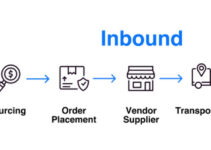Maintaining inventory helps businesses and companies to perform their operations continuously without any delays. Holding excessive inventory would impact the cash flow of your business because you can’t use the capital invested in the excessive inventory on other projects. Today, we’ll discuss inventory planning in supply chain management; key elements in the process, advantages, and disadvantages.
What is Inventory Planning in Supply Chain Management?
Inventory planning in supply chain management is the method of predicting demand and deciding how much inventory is required and when you should order it. It allows businesses and companies to satisfy the demands target customer market while keeping their expenses low.
If you procure the right amount of inventory at the right time in the right place; then it allows you to decrease the product storing cost; optimize inventory allocation routes, and make sure that you have the right stock to satisfy the needs and demands of customers.
Goals of Inventory Planning in SCM
The goal and objective of any business is to amplify profitability by satisfying the needs and wishes of customers. The business or company would be on the verge of losing customers if the required product is unavailable at the right time. Customer loyalty could impact the profitability of your business because finding and attracting new customers is more costly than retaining the old ones.
Some of the main goals and objectives of inventory planning in SCM are as follows;
Storage Efficiency
As the name implies, the objective here is to organize and manage the highly demanded product items in order to decrease travel time.
Cost Controlling
Storage cost, holding, or inventory cost comprises of total 20-30% of your business cost. The goal and objective of inventory planning is to decrease all such costs.
Future Planning
If you employ the data analytical trend, previous data patterns, and the details of the upcoming events, then it helps you to forecast the inventory level of the future.
Process Flow of Inventory Planning in SCM
Some of the main steps involved in the process flow of inventory planning in SCM are as follows;
Procurement
Businesses and companies purchase inventory based on initial inventory planning research, best-case scenario, and estimate of needed items that you required. It is undesirable to maintain excessive inventory, companies could overstock in their first procurement.
Storage
Businesses and companies should store and manage inventory stock in a safe, secure, and clean area. It comprises investing in holding costs to manage refrigeration, heating, and lighting.
Utilization
Businesses and companies should take stock of items from the inventory for the intended objective of repair parts, raw materials, and sales items.
Tracking
Businesses and companies should track or analyze stock either to consume or retrieve is to satisfy the needs and wishes of customers, manage cash flow, and maintain production flow. Tracking allows you to beware of the items in the stock what and when to reorder.
Reordering
Replenishing and reordering inventory are important elements that you could perform either manually or automatically. You could comprehend the strategic, management, or mathematical model to maintain the optimum stock level, the number of ordering items, and how often you should order them.
Prediction & Forecasting
Well-developed organizations have got the experience and expertise to expect the inventory cycle and predict the timing and inventory needs. Prediction and forecasting allow you to keep the minimum stock level throughout the year.
Advantages of Inventory Planning in SCM
Some of the main benefits and advantages of inventory planning in SCM are as follows;
Quality Control
Faulty and damaged products could jeopardize the reputation of your product quality. It is significant to develop a quality benchmark of your inventory level as a part of your strategic plan. However, if you are carefully analyzing the goods and products in the stock, then you should analyze their quality.
Satisfied Customers
Unpredicted product shortages could negatively impact the customer retention rate and business. For e-commerce businesses and physical stores, managing the stock of popular items would lead to a decrease in sales and other losses because you’re missing opportunities.
High Profit
Companies would waste limited capital on storing, ordering, and managing excessive stock through effective inventory planning. It would decrease various expenses like security costs, warehousing rent, and labor rent; amplifying the profitability with consistent revenue.
Inventory Control
Inventory planning allows you to predict the future by anticipating the various needs and demands of customers. The Inventory control deals with various processes of storing, verifying, unpacking, and receiving inventory. However, businesses and companies employ inventory control to develop reorder quantities, reordering, and restocking.
Demand Forecasting
Demand forecasting is the method employing historical data and trends to forecast demand and upcoming trends of your product. The prediction and forecasting tools and applications help you to make informed decisions about future inventory needs and requirements.
Disadvantages of Inventory Planning in SCM
Some of the main challenges and disadvantages of inventory planning in supply chain management are as follows;
Human Error
Technology helps you to some extent, but mainly inventory management is reliant on the person in charge or the inventor planner. When there is a change of role, the new planner would have limited brand awareness, and it would take him some time to analyze the historical data and existing trends. However, limited awareness and poor training systems would result in the form of miscalculations.
Various Locations
It is difficult to manage inventory stored across multiple locations. It is difficult and challenging to allocate your inventory without having a suitable inventory tracking system. However, if you are storing inventory in the wrong place, it would cause shipping costs and delayed customer order fulfillment.
Guess Work
Prediction and forecasting are not easy. If you don’t have the right forecasting tools and KPIs, then it would require you to perform guesswork. However, it is difficult to make predictions and forecasting in the presence of changing market conditions.
Desperate Data
You would require data from various places for effective inventory planning. It is a complicated task to consolidate all in one place. The planners should collect data from the following places;
- Point of sale
- Suppliers
- Fulfillment
- Accounting
- Sales order
Conclusion: Inventory Planning in Supply Chain Management
After an in-depth study of inventory planning in supply chain management; we have realized that inventory planning is highly significant for cost management. If you are learning about inventory planning in SCM, then you should keep in mind the abovementioned process, elements, advantages, and disadvantages.
Ahsan is an accomplished researcher and has a deep insight in worldly life affairs. He goes Live 3 days a week on various social media platforms. Other than research writing, he’s a very interesting person.


